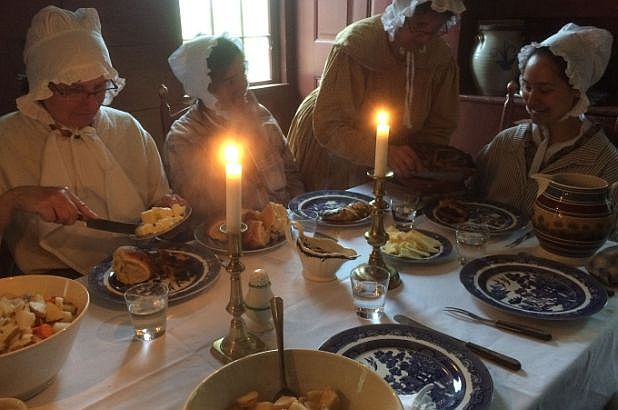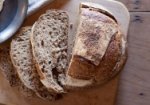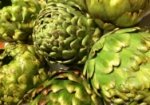While our TV’s have recently been taking us ‘back in time for dinner’ from the 1950s, yours truly, ‘the Cook’ has been on a quest to learn more about the way we cooked before the 1850s.
Living history
With the assistance of Sydney Living Museums’ Ruth Pope Bequest research grant I visited Old Sturbridge Village, a living history museum in Massachusetts, USA. which specialises in preserving traditional trades and crafts, including culinary techniques, from the early 19th century. There are close parallels between this period of American history and colonial Australia as British-based cultures, but America has many more domestic buildings that have been preserved, especially in regional areas. There is also a very active re-enactment movement in the US, ALHFAM, that preserves, revives and educates practitioners in traditional crafts and trades. Some are trade or workshop-based professions, such as shoe-making, pottery, blacksmithing and tinsmithing, carpentry and coopering, while others are more domestic in nature, such as small-scale farming and animal husbandry, dairying, butchery, food preservation and cookery.
Old Sturbridge Village has no less than four houses with functioning kitchens, and works hard at maintaining traditional techniques and using authentic equipment so you can understand how keen I was to experience them first-hand.
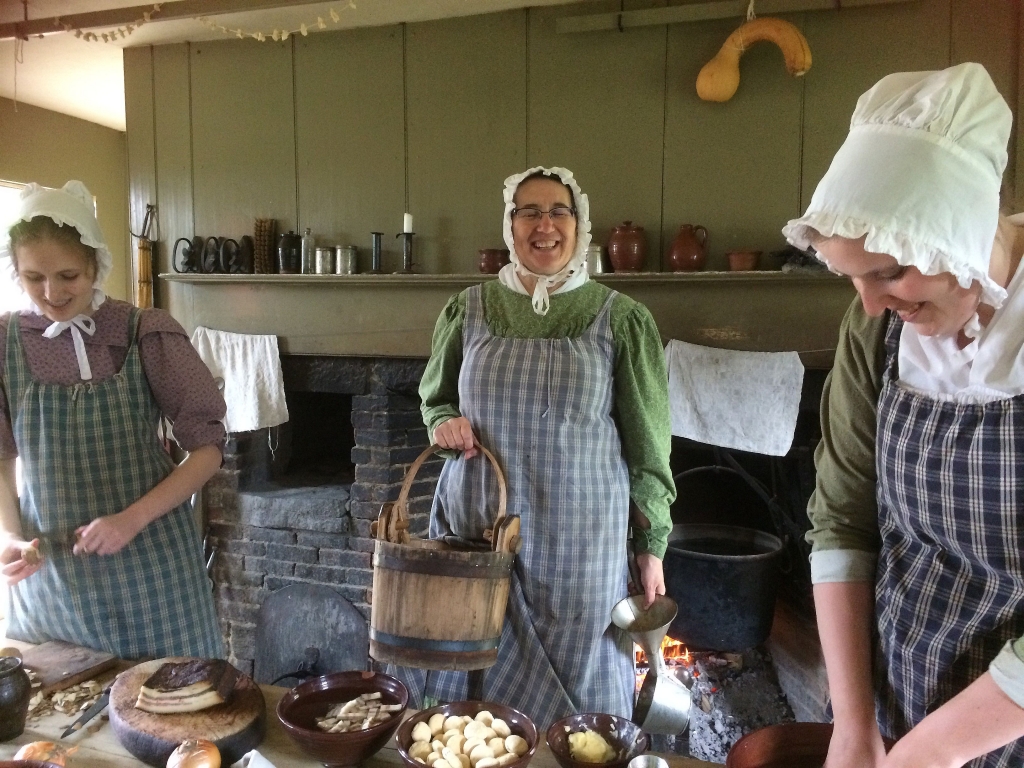
Costumed staff at Old Sturbridge Village prepare food in the farmhouse kitchen at Old Sturbridge Village museum, USA. Photo Jacqui Newling © Sydney Living Museums
Re-enacting and recreating
Costumed ‘interpreters’ and interns at Old Sturbridge Village specialise in re-enacting and recreating traditional skills and day-to-day tasks. Their research, training and active performance help to educate and entertain visitors, increase the understanding of life in the past, and help keep the skills alive.
Food plays a major role in the interpretation of the museum, with staff recreating dishes from period cookbooks using methods and equipment from the 1830s (see references below). The village features several houses that have fully functioning wood-fuelled open hearths in their kitchens. Some also have bee-hive style bread ovens for baking. In the next few weeks I’ll look more closely at hearth fire cookery techniques, but this gives an overview of the types of culinary history that visitor’s encounter at Old Sturbridge Village.
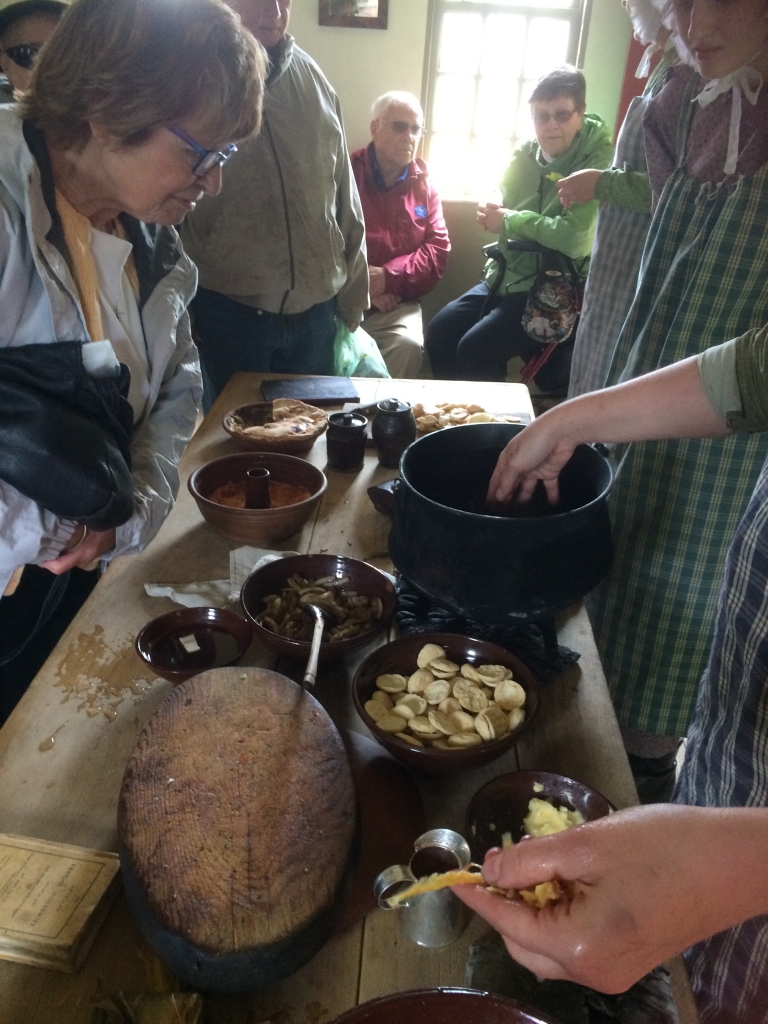
Costumed guides at Old Sturbridge Village discuss ingredients, recipes and cooking techniques with visitors. Photo Jacqui Newling © Sydney Living Museums
A lot from a little
Period cookbooks are used as references for the types of food that was being cooked in households of different status and means. Part of the museum’s message is that although they didn’t have modern conveniences that we rely on today, people ate well in this region of America. Even relatively wealthy people enjoyed relatively simple home cooked fare, most of it produced locally.
A great range of culinary delights can be created from seemingly small number of ingredients, many of them kept at easy reach in pantry stores, supplemented with fresh dairy, eggs, and vegetables. If you didn’t grow them yourself, you could enter into reciprocal arrangements with community members, exchanging produce for trades skills such as carpentry or milling or professional services; it was not uncommon for doctors to be paid in wheat or livestock.
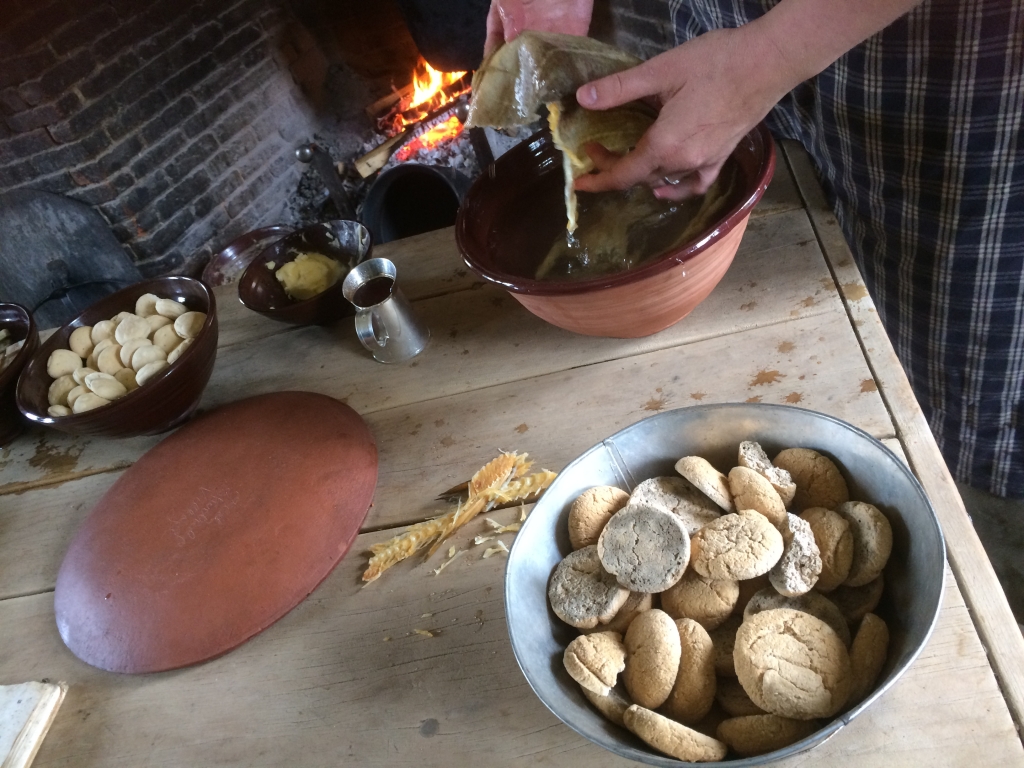
Fish stew being prepared for the days cookery in the farmhouse kitchen at Old Sturbridge Village, USA. Photo Jacqui Newling © Sydney Living Museums
Keeping time
Food preservation was an important part of sustainability and meat raised at the museum is slaughtered, butchered then preserved by curing in smoke-houses to provide ham and bacon, butter is churned and stored in brine-filled clay pots (shown below). Pickles and preserved fruit are made from ingredients grown in the museum gardens and supplemented with dried salted fish (especially important for those following Lent and other religious dietary observations), dried legumes and imported ingredients such as sugar and spices. These ingredients are used to recreate old recipes in the museum’s various household kitchens using traditional cooking techniques, which we will look at in more detail in the coming weeks, so watch this space!
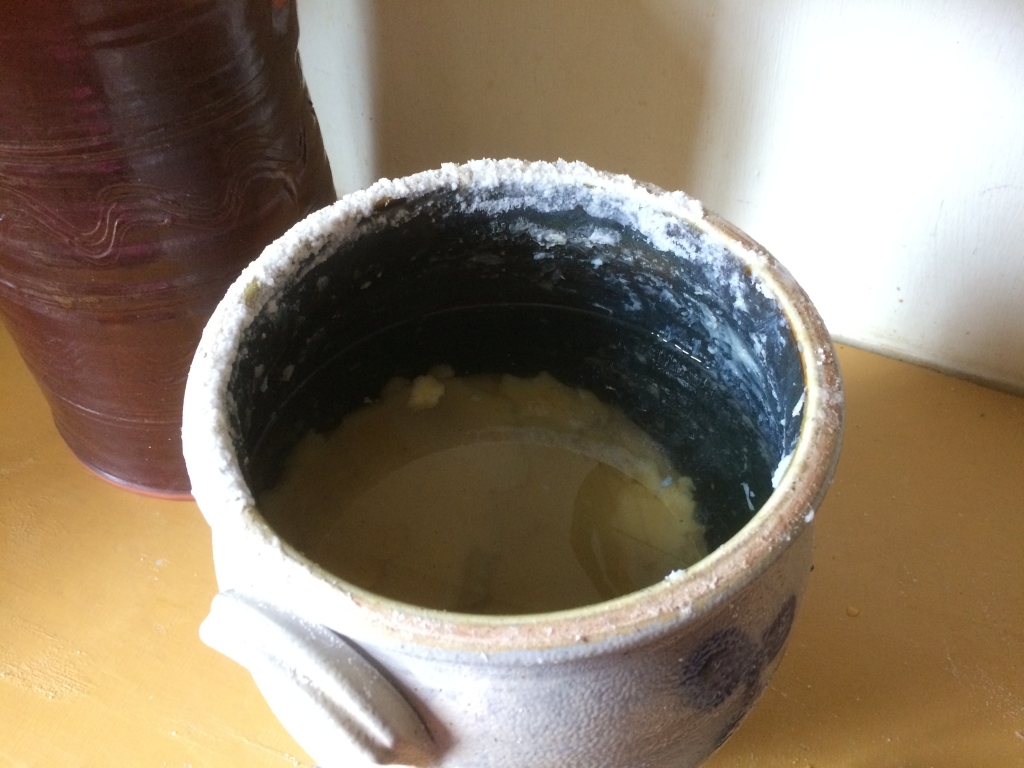
Home made butter stored in brine at Old Sturbridge Village museum, USA. Photo Jacqui Newling © Sydney Living Museums
Books for (history) cooks
Cookbooks referenced include the following. Most are readily available in facsimile and/or Archive.org, Google Books or Guttenburg e-presses.
Lydia Marie Child, The Frugal Housewife (1829)
Hannah Glasse, The Art of Cookery Made Plain and Easy (various editions published between 1745 – 1800s. Several are available in facsimile, including the 1805 American edition)
Maria Rundell, A new system of domestic cookery (1816)
Mary Randolph, The Virginia Housewife (1824)
Amelia Simmons, American Cookery (1796)
See also Old Sturbridge Village Cookbook: Authentic Early American Recipes For The Modern Kitchen (available locally at Books for Cooks in Melbourne).
